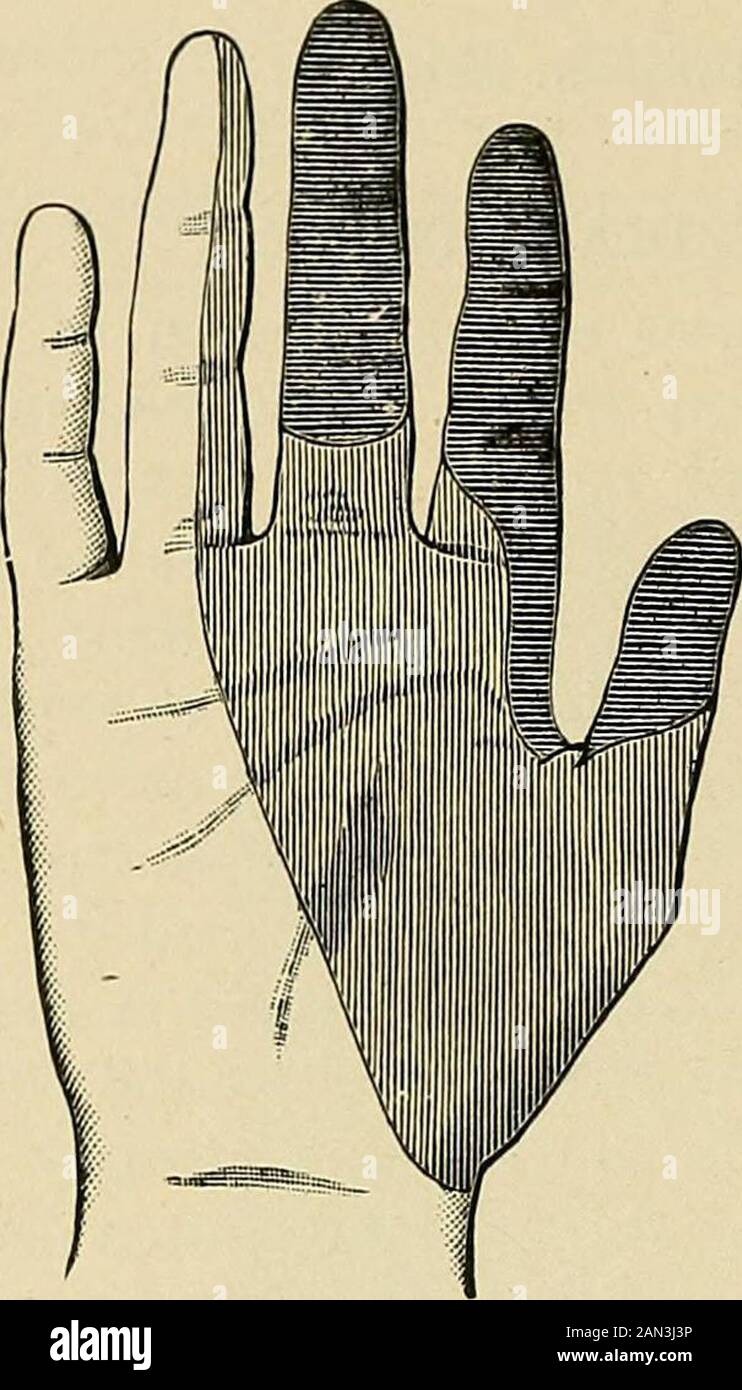Organic and functional nervous diseases; a text-book of neurology . f of the deep flexors of the flngers, the musclesof the little finger, the interossei, the inner two lumbricales, and theadductors of the thumb. The result of paralysis of the ulnar flexor of the wrist is not verymanifest, as other muscles are capable of doing the work of theflexor carpi ulnaris. A paralysis of the flexor profundus digitorummakes the patient incapable of flexing the first phalanges of the littleand ring fingers, hence there is no opposition to their extreme exten-sion, and part of the deformity of the hand res

Image details
Contributor:
The Reading Room / Alamy Stock PhotoImage ID:
2AN3J3PFile size:
7.1 MB (320 KB Compressed download)Releases:
Model - no | Property - noDo I need a release?Dimensions:
1195 x 2091 px | 20.2 x 35.4 cm | 8 x 13.9 inches | 150dpiMore information:
This image is a public domain image, which means either that copyright has expired in the image or the copyright holder has waived their copyright. Alamy charges you a fee for access to the high resolution copy of the image.
This image could have imperfections as it’s either historical or reportage.
Organic and functional nervous diseases; a text-book of neurology . f of the deep flexors of the flngers, the musclesof the little finger, the interossei, the inner two lumbricales, and theadductors of the thumb. The result of paralysis of the ulnar flexor of the wrist is not verymanifest, as other muscles are capable of doing the work of theflexor carpi ulnaris. A paralysis of the flexor profundus digitorummakes the patient incapable of flexing the first phalanges of the littleand ring fingers, hence there is no opposition to their extreme exten-sion, and part of the deformity of the hand resulting from ulnar nervepalsy (Figs. 98 and 99) is due to this cause. The chief disability, however, produced by ulnar nerve lesions is theparalysis of all the intrinsic muscles of the hand excepting the first and 188 INJUmES OF SPINAL NERVES AND NEVmflS. second lumbricales, which are supplied by the median nerve. As aresult of this paralysis the use of the thumb and fingers is very muchimpaired, the thenar and hypothenar eminences become flat and flabby, Fig. 96.. Fig. 97.